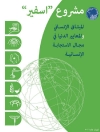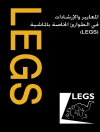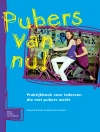“An Ethnography of the Goodman Building vividly incorporates a wide variety of methods to tell the story of class struggle in a building, neighborhood, and city that is replicated globally. I read it as a number of boxes inside each other opened in the course of reading. Caldararo recounts the building’s personal “biography” to convey not only the “facts about, ” but the “feelings about” the flesh and blood of the building and its surrounding neighborhood.” —Jerome Krase, Brooklyn College of The City University of New York, USA
“This unique contribution to the field of urban and regional studies counteracts current trends in the ethnographies of urban movements by offering, with great hindsight, an analysis from a physical space, and from first-hand experience. The focal point is one building, and the author is a former tenant. This perspective is appealing, especially in an era of global connections where macro social movements are on the front line of urban life and research.” —Nathalie Boucher, Director and Researcher, Respire, and Affiliated Professor Assistant, Department of Sociology and Anthropology, Concordia University, Canada.
Through in-depth analysis and narrative investigation of an actual building occupation, Niccolo Caldararo seeks to not only offer an historical account of the Goodman Building in San Francisco, but also focus on the active resistance tactics of its residents from the 1960s to the 1980s. Taking as its focal point the building itself, the volume weaves in and out of every life involved and the struggles that surround it—San Francisco’s urban renewal, ethnic clearing, gentrification, and municipal governance at a time of booming urban growth. Caldararo, a tenant at the center of its strikes and activities, provides a unique perspective that counteracts current trends in ethnographies of urban movements by grounding its analysis in physical and tangible space.
Cuprins
Part I: The National Context for the Goodman Buildilng.- Chapter 1: The Housing Crisis in America and the Policies That Created and Promote It.- Part II: Setting the Scene of the Goodman Building.- Chapter 2: Preface to the Goodman Building Ethnography.- Chapter 3: The Background and Setting.- Chapter 4. Redevelopment in the Western Addition.- Part III: The Goodman Building in Transition: From Single Room Occupancy for Temporary Workers to Artist Hotel to Community Action.- Chapter 5: Resistance, WAPAC: J-Town Collective, Nihonmachi Little Friends—The Goodman Group; and Coalitions with Architectural Preservationists.- Chapter 6: A Broader Field: BART, TOOR and the I-Hotel.- Chapter 7: Beat Rebels with a Cause, Hippies and Community.- Chapter 8: The Monday Night Meeting: ‘These Are Artists, You’ll Never Get Them Organized!’ San Fransisco Art Commissioner.- Chapter 9: Living in an Art Community.- Part IV: Communities of Change and Occupation.- Chapter 10: Learning From Others and Spreading the Word.- Chapter 11: Democracy At Home.- Chapter 12: Media Darlings, Art Scene and Money: Saving the Goodman Building.- Chapter 13: Repression, Reaction and Retrenchment.- Chapter 14: The Strike Ends, Losing the Goodman Building.- Part V: A New Start in a Changing City.- Chapter 15: Assessment, and a New Goodman Building in the Era of Go-Go Capitalism.- Chapter 16: Conversations at G2: The New Goodman Building Interviews with Tenants at the 18th Street Complex.
Despre autor
Niccolo Caldararo is Lecturer in Anthropology at San Francisco State University, USA. In addition to academic work on medical anthropology, economic anthropology, and other fields, he is an active consultant in artifact conservation and analysis.











